
Products
DJI Mini 3 Vs DJI Mini 3 Pro
Find out the differences between both drones in this in-depth review to help you pick the right aircraft.

DJI has launched the Mini 3. Find out how it compares to the Mini 3 Pro in this in-depth review;
The Mini 3 has some of the same features as the Mini 3 Pro, but is a more cost-effective option;
Both drones have a 1/1.3-inch CMOS sensor, but the Mini 3 Pro's sensor has 48MP, while the Mini 3 has 12MP. The Mini 3 Pro can shoot 4K @ 60fps video, the Mini 3 tops out at 4K @ 30fps;
The Mini 3 Pro features DJI's upgraded O3 transmission for greater transmission distance and reduced latency, while the Mini 3 has the older O2 transmission;
The Mini 3 benefits from 38 minutes of flight time, while the Mini 3 Pro has 34 minutes.
The DJI Mini 3 is here - offering a more cost-effective alternative to the popular Mini 3 Pro which launched in spring 2022.
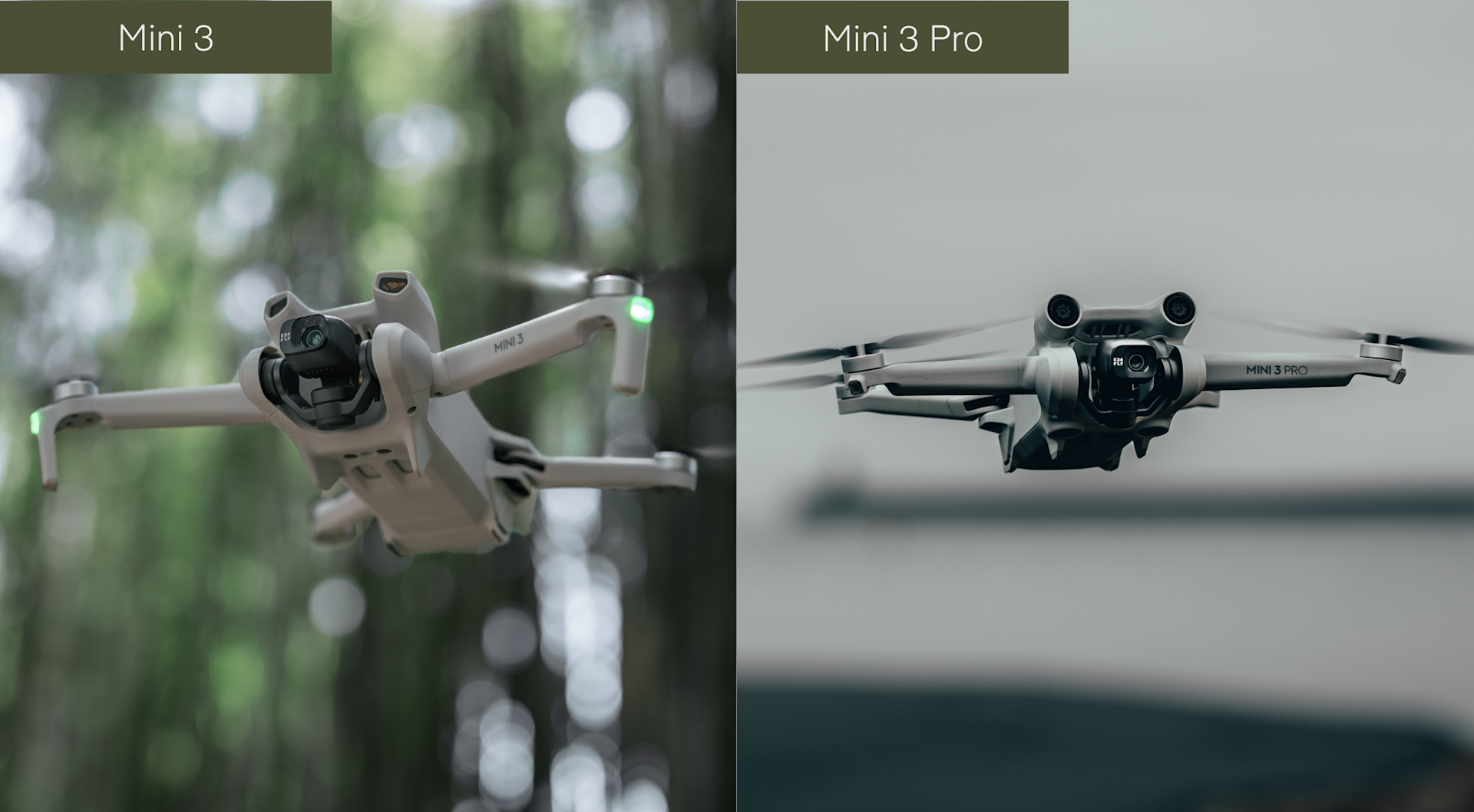
While the cheaper price tag does result in some sacrifices - such as a less capable camera and watered-down safety features - the Mini 3 is still a seriously attractive proposition and a more than capable performer, especially for beginners or those on a budget. It's also fair to say that the Mini 3 series has become an attractive tool for some commercial operators.
Key features of the Mini 3 include a 12MP 1/1.3-inch CMOS sensor, ability to shoot 4K HDR video, rotating gimbal for portrait content, 38 minutes of flight time, and intelligent shooting modes - all within a tiny 248g frame.
So, if you're in the market for a mini drone, should you opt for the Mini 3 Pro or the Mini 3? Find out in this in-depth comparison blog.
Or to find out how the Mini 3/Mini 3 Pro compare to the older versions of the DJI Mini Series, such as the Mini 2 and Mini SE, and to discover how the series has evolved, read this versus article.
Key Specs
This table provides an at-a-glance overview of the key specs of the Mini 3 and Mini 3 Pro.
Weight | 248g | <249g |
Dimensions (L x W x H) | Folded: 148 x 90 x 62 mm; Unfolded (with propellers): 251 x 362 x 72 mm | Folded: 145 x 90 x 62 mm Unfolded (with propellers): 251 x 362 x 70 mm |
Camera | 1/1.3-inch CMOS Effective Pixels: 12 MP | 1/1.3-inch CMOS Effective Pixels: 48 MP |
True Vertical Shooting | Yes | Yes |
Video Resolution | 4K @ 30fps | 4K @ 60fps |
Flight Time | 38 minutes | 34 minutes |
Transmission System | DJI O2 | DJI O3 |
Transmission Distance (CE) | 6km | 8km |
Sensing Systems | Downward | Forward, Backward, Downward |
Compatible Controllers | DJI RC-N1: DJ RC | DJI RC-N1: DJI RC; DJI RC Pro; DJI RC Motion 2 |
Price | Drone only: %% price: 'dji-mini-3-drone' %% Drone and RC-N1 controller: %% price: 'dji-mini-3-rcn1' %% Drone and DJI RC controller: %% price: dji-mini-3-dji-rc' %% Fly More Combo, with drone, RC-N1 and additional accessories: %% price-min: 'dji-mini-3-fly-more-combo' %% Fly More Combo, with drone, DJI RC, and additional accessories: %% price-max: 'dji-mini-3-fly-more-combo' %% | Drone only: %% price: 'dji-mini-3-pro-drone' %% Drone and RC-N1 controller: %% price: 'dji-mini-3-pro-rcn1' %% Drone and DJI RC controller: %% price: 'dji-mini-3-pro-dji-rc' %% No Fly More Combo is available, but a Fly More Kit with key accessories (but no drone/controller) is available: %% price: 'dji-mini-3-pro-fly-more-kit' %% |
Mini 3 Vs Mini 3 Pro: Camera
Thanks to their lightweight nature and small frame, the Mini 3 and Mini 3 Pro are great drones for capturing content on the go.
So, how do their cameras stack up? In truth, both offer plenty in this department, especially considering their size, although the Mini 3 Pro does have the edge when it comes to content creation capabilities.
Both drones feature a 1/1.3-inch CMOS sensor, but the Mini 3 Pro benefits from 48MP while the Mini 3 has 12MP.
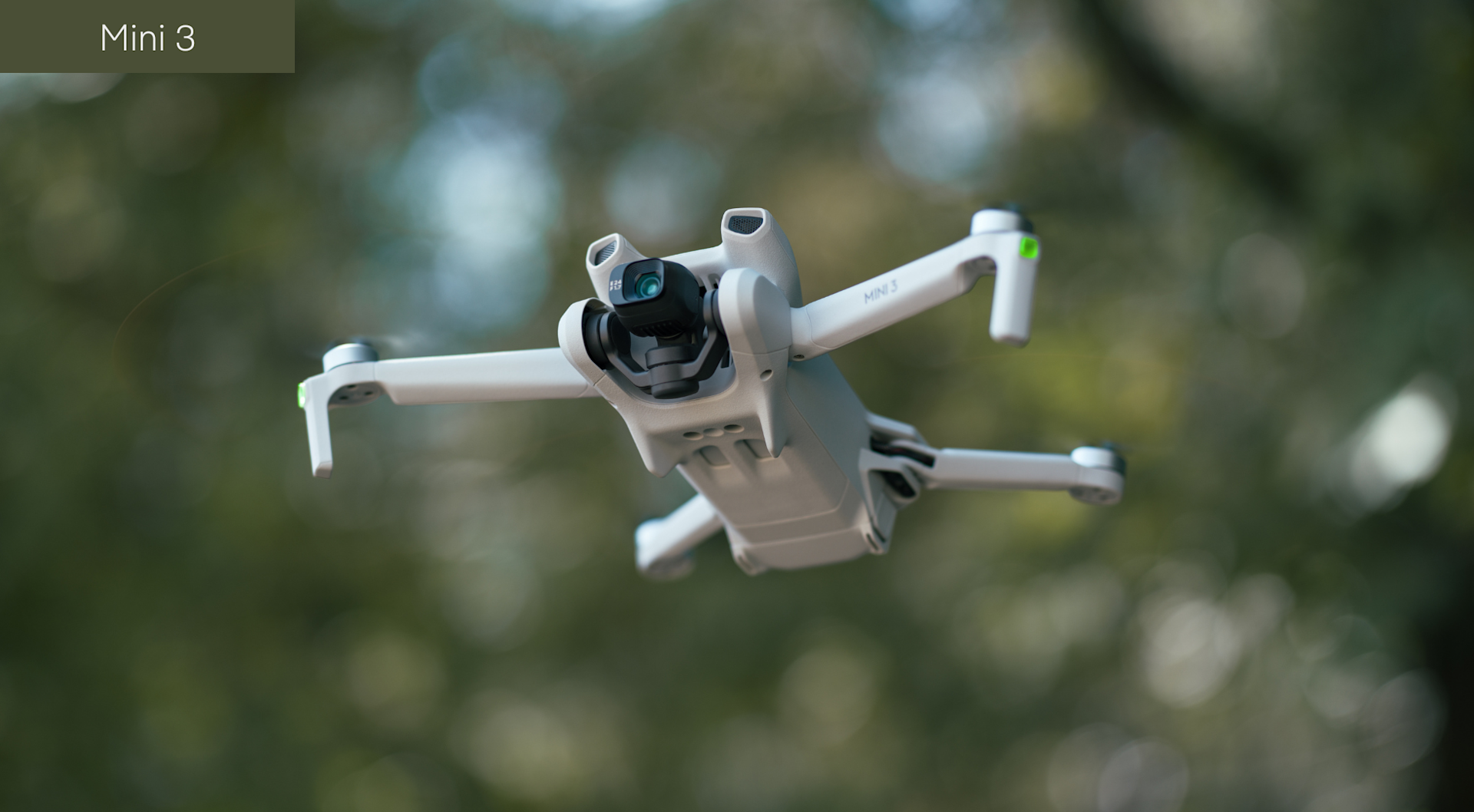
There are also differences in the ISO range, with the Mini 3 Pro stretching from 100-6400 (Auto/Manual; Video/Photo), and the Mini 3 has a smaller 100-3200.
In terms of video, the Mini 3 Pro can achieve 4K @ 60fps, but the Mini 3 tops out at 4K @ 30fps. But, whether this matters depends on the requirements of each user - especially as 1080p resolution is more than good enough for YouTube, and both drones are capable of 1080p @ 60fps. But for commercial operators who deploy the Mini drones, the best-quality footage possible may well be preferable.

Social media fans will be pleased to hear that both drones benefit from True Vertical Shooting to enable content creators to capture portrait-shaped imagery, which is especially ideal for Instagram users.
The Mini 3 and Mini 3 Pro feature QuickShots mode, which helps operators capture complicated shots effortlessly with a couple of button clicks. Both can conduct Dronie, Helix, Rocket, Circle, and Boomerang operations, but the Mini 3 Pro has the additional Asteroid function.
These QuickShot modes enable the drone to do the following:
Dronie: The aircraft flies backward and ascends, with the camera locked on the subject.
Circle: The aircraft circles around the subject.
Helix: The aircraft ascends and spirals around the subject.
Rocket: The aircraft ascends with the camera pointing downward.
Boomerang: The aircraft flies around the subject in an oval path, ascending as it flies away from its starting points and descending as it flies back.
Asteroid: The aircraft flies backward and upward, takes several photos and then flies back to the starting point. The video generated starts with a panorama of the highest position and then shows the descent.
Aside from QuickShots, the Mini 3 Pro and Mini 3 can facilitate panoramas (180°, wide angle, and sphere - the Mini 3 Pro can also do vertical) and have up to 4x zoom capabilities.
The table below provides a full overview of the camera specifications, to show the features and differences between the two drones.
Mini 3 | Mini 3 Pro | |
Sensor | 1/1.3-inch CMOS Effective Pixels: 12 MP | 1/1.3-inch CMOS Effective Pixels: 48 MP |
Lens | FOV: 82.1° Format Equivalent: 24 mm Aperture: f/1.7 Focus: 1 m to ∞ | FOV: 82.1° Format Equivalent: 24 mm Aperture: f/1.7 Focus Range: 1 m to ∞ |
ISO Range | Video: 100-3200 Photo: 100-3200 | Video: 100-6400 (Auto), 100-6400 (Manual) Photo: 100-6400 (Auto), 100-6400 (Manual) |
Shutter Speed | Electronic Shutter: 2-1/8000 s | Electronic Shutter: 2-1/8000 s |
Max Image Size | 4000 x 3000 | 4:3: 8064 x 6048 (48 MP), 4032 x 3024 (12 MP) 16:9: 4032 x 2268 (12 MP) |
Still Photography Modes | Single Shot: 12 MP Timed: 12 MP JPEG: 2/3/5/7/10/15/20/30/60 s JPEG + RAW: 5/7/10/15/20/30/60 s Automatic Exposure Bracketing (AEB): 12 MP, 3 frames at 2/3 EV step Panorama: Sphere, 180°, Wide Angle | Single Shot Interval: JPEG: 2/3/5/7/10/15/20/30/60 s JPEG + RAW: 2/3/5/7/10/15/20/30/60 s Auto Exposure Bracketing (AEB): 3/5 bracketed frames at 2/3 EV Bias Panorama: Sphere, 180°, Wide-angle, and Vertical |
Photo Format | JPEG/DNG (RAW) | JPEG/DNG (RAW) |
Video Resolution | 4K: 3840 x 2160@24/25/30 fps 2.7K: 2720 x 1530@24/25/30/48/50/60 fps FHD: 1920 x 1080@24/25/30/48/50/60 fps | 4K: 3840 x 2160@24/25/30/48/50/60fps 2.7K: 2720 x 1530@24/25/30/48/50/60fps FHD: 1920 x 1080@24/25/30/48/50/60fps Slow Motion: 1920 x 1080@120fps |
HDR Mode | HDR: The Single Shot mode supports outputting HDR images. HDR: Recording with the 24/25/30fps frame rate supports outputting HDR images. | Photo: HDR supported in Single Shot mode Video: HDR supported when shooting at 24/25/30fps |
Video Format | MP4 (H.264) | MP4/MOV (H.264/H.265) |
Max Video Bitrate | 100 Mbps | 150 Mbps |
Zoom Range | 4K: 2x 2.7K: 3x FHD: 4x | 4K: 2x 2.7K: 3x FHD: 4x |
QuickShot Modes | Dronie, Helix, Rocket, Circle, and Boomerang | Dronie, Helix, Rocket, Circle, Boomerang, and Asteroid |
Colour Profiles | Normal | Normal D-Cinelike |
Supported File System | FAT32 (≤ 32 GB) exFAT (> 32 GB) | FAT32 (≤32 GB) exFAT (>32 GB) |
Flight Performance And Safety Features
Considering their size, the Mini 3 Pro and Mini 3 are seriously impressive performers.
Flight Time
Both have decent endurance to help operators capture more content in a single flight. In fact, the Mini 3 has a maximum flight time of 38 minutes, while the Mini 3 Pro is slightly less, at 34 minutes.
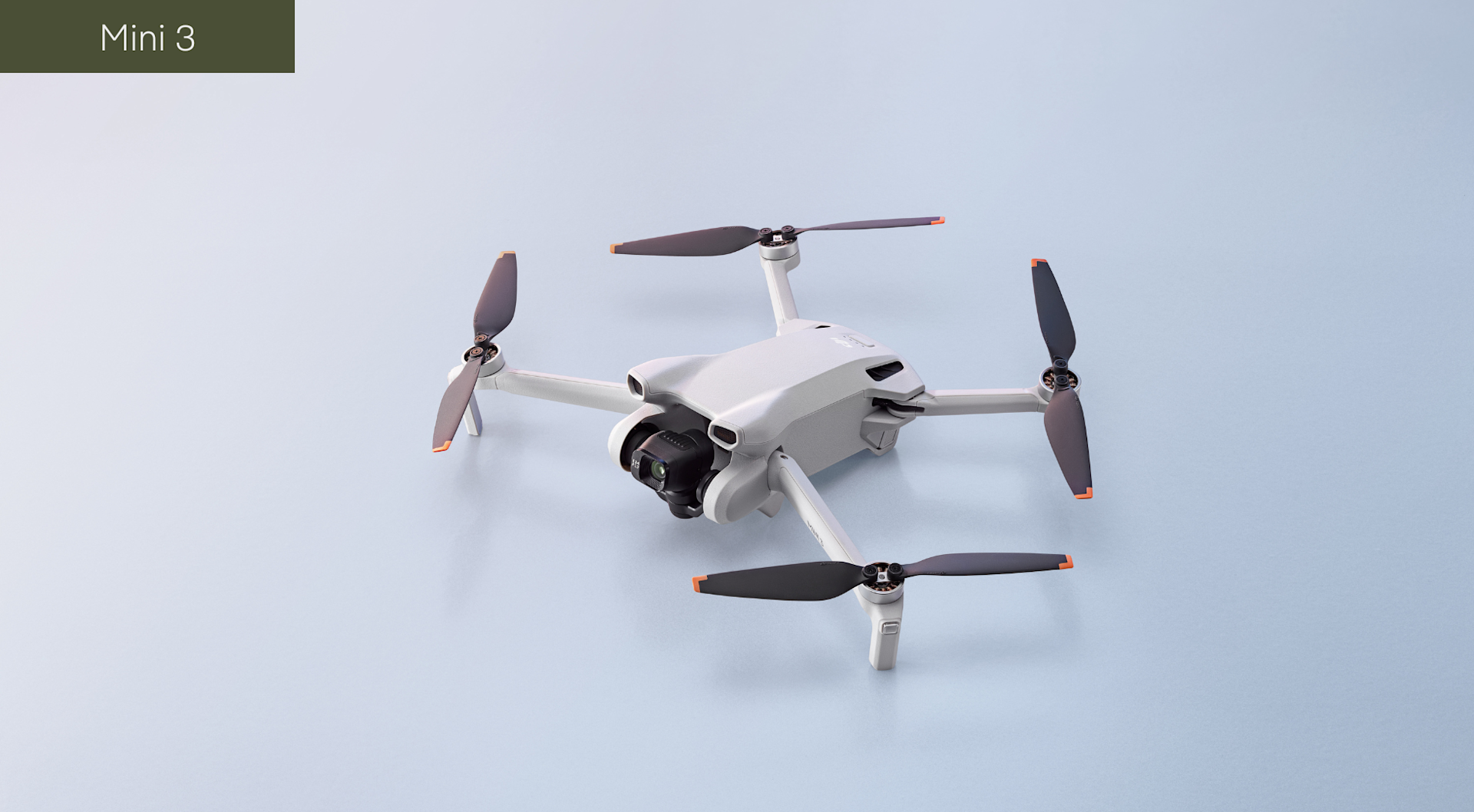
These drones' airtime can be increased by using the Intelligent Flight Battery Plus, but these batteries are not being introduced in the UK.
Speed
The Mini 3 and Mini 3 Pro are fairly pacey operators, clocking a maximum speed of 16m/s, which is around the 35 mph mark.
Operational Envelope
Both drones are robust platforms, enabling pilots to fly in a range of weather conditions.
This includes the ability to handle temperatures from -10°C to 40C and wind speeds of 10.7m/s (or Level 5 = fresh breeze). For guidance, this wind speed resistance places the Mini 3 drones on par with other DJI drones - which are larger platforms - such as the Air 2S and Phantom 4 Pro V2.0.
It's worth noting that neither drone has an IP rating, therefore it is not recommended to fly either in the rain.

Transmission Distance
One of the big differences between the Mini 3 and Mini 3 Pro is the transmission system.
The Mini 3 Pro benefits from DJI's enhanced OcuSync 3 transmssion, while the Mini 3 is restricted to the older DJI O2.
So what does this mean?
Essentially, OcuSync 3.0 uses a new image transmission solution. Equipped with four antennas compared to OcuSync 2.0's two antennas, it brings full HD image transmission at greater distances, enhances the anti-interference capability of the image transmission system, and improves the reliability of the image transmission system in complex environments such as cities.
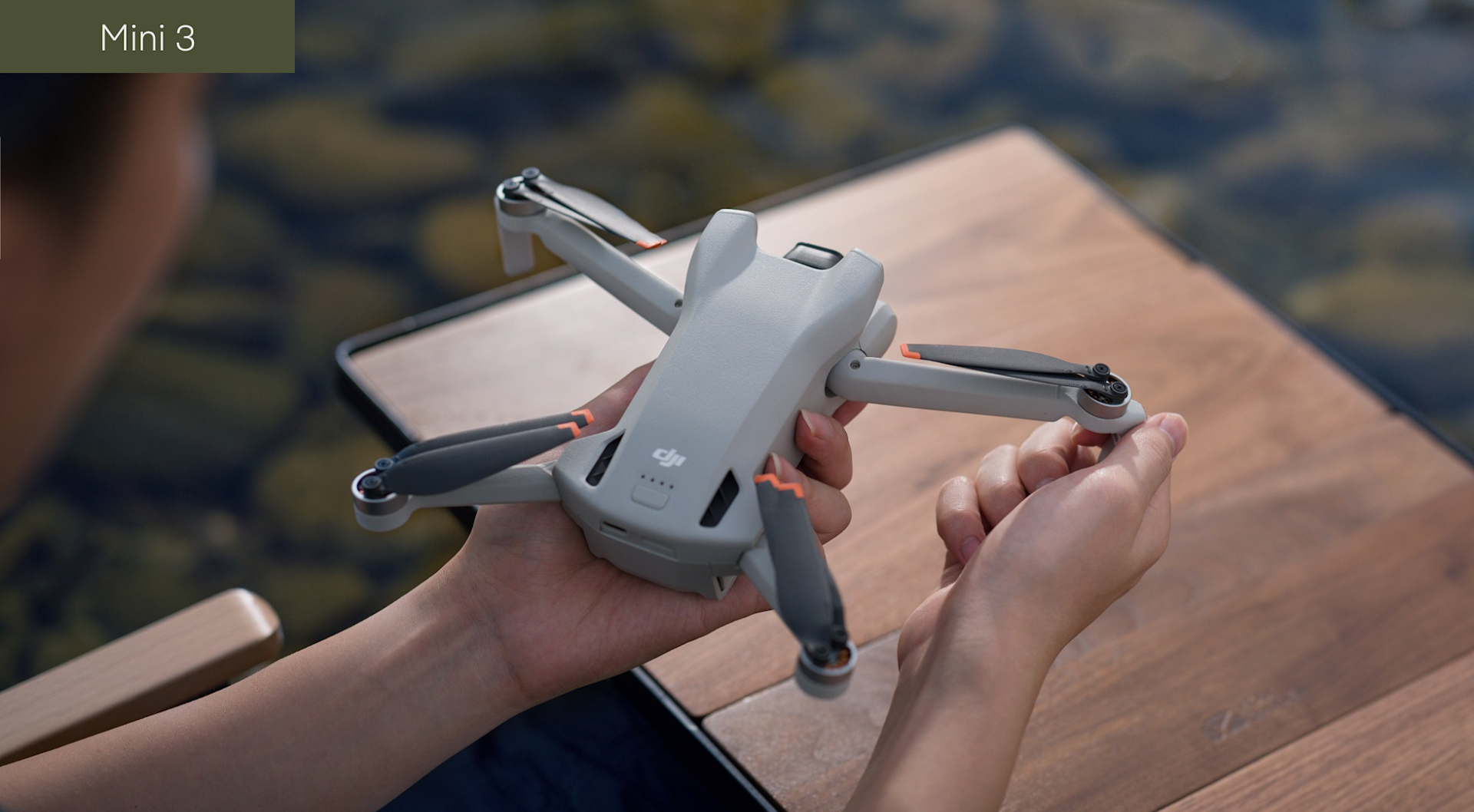
So, how does this play out in real terms in relation to the Mini 3 and Mini 3 Pro?
First off, the Mini 3 Pro has a maximum transmission distance of 8km (CE), while the Mini 3 is restricted to 6km (CE).
The Mini 3 Pro's upgraded transmission system enhances the live view quality on the controller, achieving 1080p @ 30fps compared to the Mini 3's 720p @ 30fps.
On top of this, the Mini 3 Pro has a lower latency of approximately 120 ms, while the Mini 3 lags slightly behind at around 200ms. Both of these speeds can be impacted by the environment and mobile device.
Whether these transmission specifications truly matter depend on the requirements and expectations of each user, but it's worth noting that the Mini 3 Pro has enhanced credentials in this department.
Safety Features
Both drones are safe and sturdy platforms - and their light weight places them in the safest drone category.
However, the Mini 3 has watered-down sensing capabilities, featuring only a downward vision system.

In contrast, the Mini 3 Pro's downward vision system is complemented by forward and backward vision systems.
Return To Home functionality is found on the two drones, which benefit from the following RTH modes:
Smart RTH: Used to bring the aircraft back to the home point. If Smart RTH is initiated, the aircraft will enter Straight Line RTH, adjusting its orientation and altitude accordingly.
Low Battery RTH: Triggered when the battery is depleted to the point where the drone may not be able to return safely.
Failsafe RTH: The action the aircraft performs once it loses signal with the remote controller. Can be set as RTH, Land or Hover.
Obstacle Avoidance and Tracking
The Mini 3 Pro benefits from the obstacle sensing system, APAS 4.0. It also has the FocusTrack suite, including ActiveTrack 4.0 which helps the drone track static and moving objects, such as vehicles and people.
The Mini 3, however, does not have these features.
Flight Performance And Safety Features: Key Specs
The table below provides an overview of the key specifications of the drones' flight performance and safety features, for an at-a-glance comparison.
Mini 3 | Mini 3 Pro | |
Max Speed (at sea level, no wind) | 16 m/s | 16 m/s (S Mode) 10 m/s (N Mode) 6 m/s (C Mode) |
Max Ascent Speed | 5 m/s | 5 m/s (S Mode) 3 m/s (N Mode) 2 m/s (C Mode) |
Max Descent Speed | 3.5 m/s | 5 m/s (S Mode) 3 m/s (N Mode) 1.5 m/s (C Mode) |
Max Flight Time | 38 mins | 34 mins |
Max Hovering Time | 33 mins | 30 mins |
Max Wind Speed Resistance | 10.7 m/s (Level 5) | 10.7 m/s (Level 5) |
Operating Temperature | -10°C to 40°C (14° to 104° F) | -10°C to 40° C (14° to 104° F) |
Hovering Accuracy Range | Vertical: ±0.1 m (with vision positioning) ±0.5 m (with GNSS positioning); Horizontal: ±0.3 m (with vision positioning) ±1.5 m (with GNSS positioning) | Vertical: ±0.1 m (with vision positioning) ±0.5 m (with GNSS positioning) Horizontal: ±0.3 m (with vision positioning) ±0.5 m (with high-precision positioning system) |
Sensing System | Downward | Forward; Backward: Downward |
Video Transmission (CE) | DJI O2 | DJI O3 |
Live View Quality | 720p/30fps | 1080p/30fps |
Latency (depending on environmental conditions and mobile device) | Approx. 200 ms | Approx. 120 ms |
Antenna | 2 antennas, 1T2R | 4 antennas, 1T2R |
Design
Mini by name, mini by nature: The DJI Mini 3 and Mini 3 Pro are seriously small drones.
Their tiny footprint, plus their sub 250g weight and foldable design, make them extremely portable - perfect for slipping into a bag or pocket to capture content on-the-go, as and when you need it.
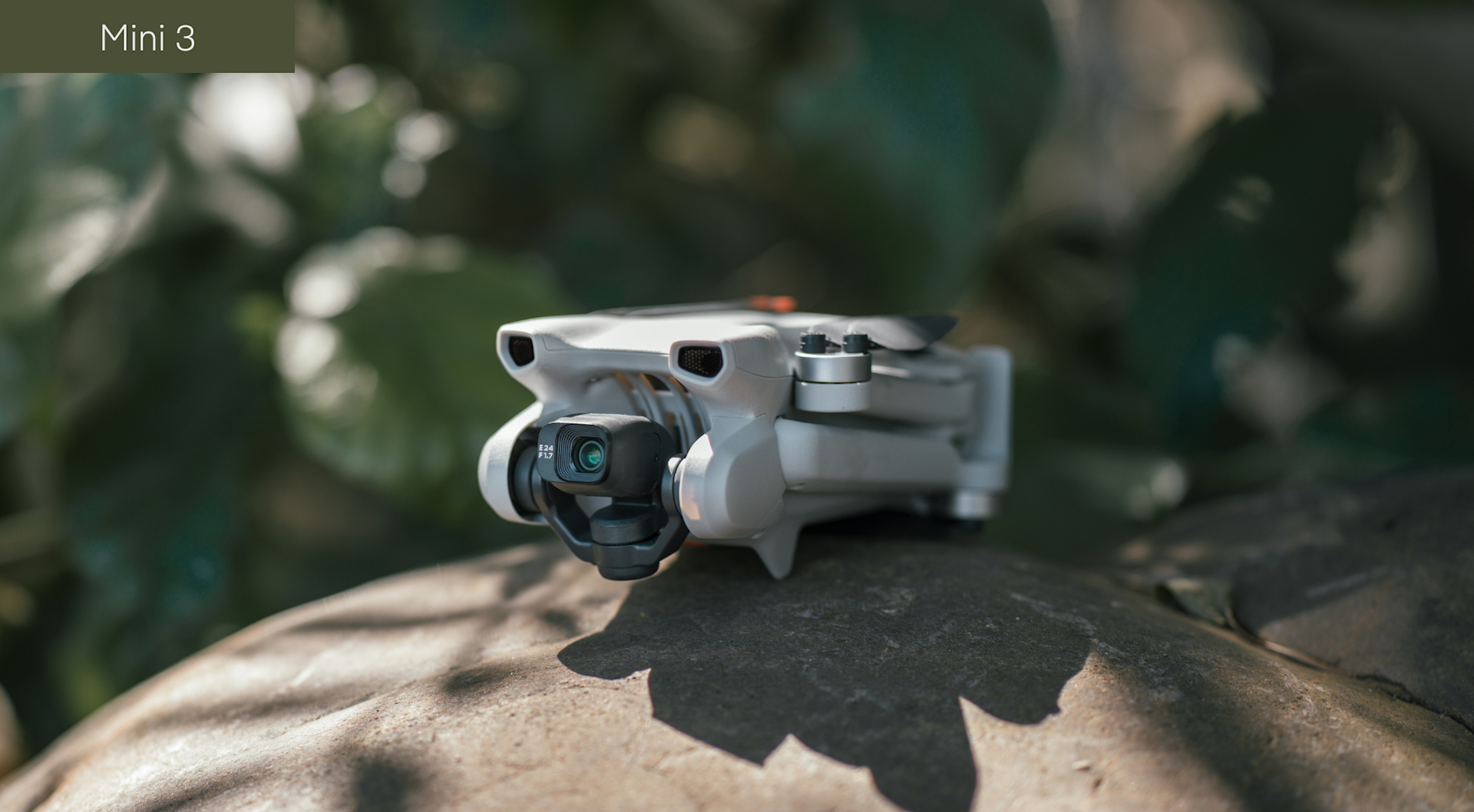
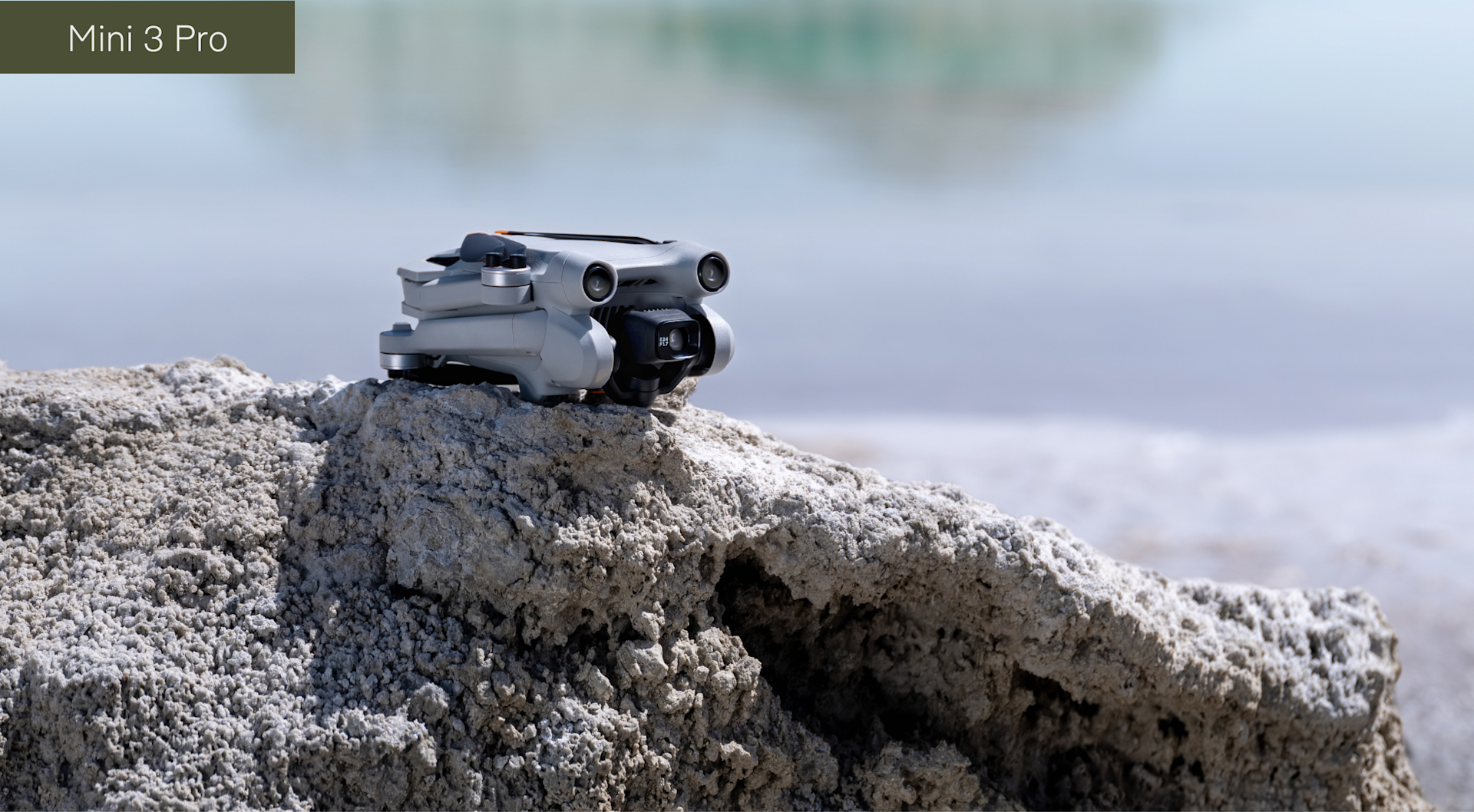
This is ideal for vloggers, travel content creators, and even some commercial drone pilots who want to throw the Mini 3 platforms up for jobs like wedding photography, marketing, and certain visual inspection jobs.
Their sub-250g weight places them in the safest weight category (particularly advantageous for newbies) and means that they can be operated in the Open Category's A1 subcategory, which permits flights over involved people, but not crowds, without the need for pilots to sit a drone training course, such as the A2 CofC or GVC.
Mini 3 | Mini 3 Pro | |
Weight | 248g | <249 g |
Dimensions (L x W x H) | Folded: 148 x 90 x 62 mm; Unfolded (with propellers): 251 x 362 x 72 mm | Folded: 145 x 90 x 62 mm; Unfolded (with propellers): 251 x 362 x 70 mm |
DJI Mini 3 Vs Mini 3 Pro: Controllers
The Mini 3 and Mini 3 Pro are compatible with the DJI RC-N1 and the DJI RC. The Mini 3 Pro is compatible with the DJI RC Pro smart controller with built-in screen, but on launch, it is unclear whether this controller can be used with the Mini 3. However, this may come in a future firmware update.

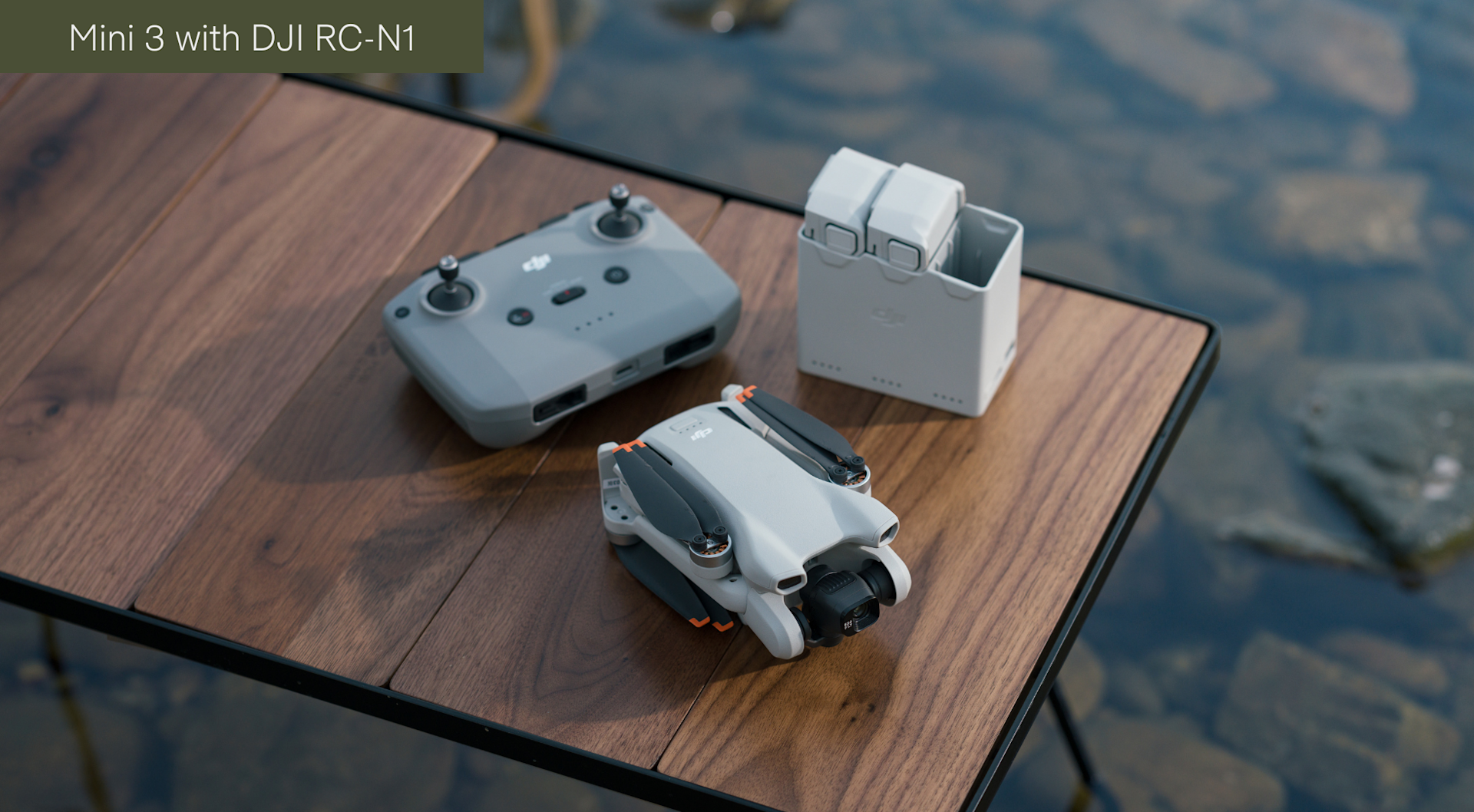
The DJI RC-N1 requires pilots to connect a separate mobile device, whereas the DJI RC and DJI RC Pro are dedicated drone smart controllers with built-in screen.
Benefits of using the smart controllers include: Ultra-bright screen for crisp viewing even under direct sunlight; easy setup and quick start; and no need for pilots to worry about interference from calls or text messages during flight.
But whether this matters comes down to preference, and the DJI RC-N1 - which is still a popular controller - may well fit the bill.
The table below provides some key specs of each controller. For a more in-depth comparison, read the DJI RC Pro vs DJI RC vs DJI RC-N1 blog.
DJI RC Pro | DJI RC | DJI RC-N1 | |
Built-in Screen | Yes | Yes | No |
Screen Brightness and Resolution | 1,000 cd/m² 1920 x 1080 resolution | 700 cd/m² 1920 x 1080 resolution | Depends on the mobile device |
Screen Size | 5.5 inches | 5.5 inches | Supports devices up to 180mm (L) x 86mm (W) x 10mm (H). Also compatible with tablet holder. |
Weight | 680 g | 390 g | 387 g (not including mobile device) |
Battery Life | 3 hours | 4 hours | 6 hours (without charging any mobile device) 4 hours (when charging a mobile device) |
OcuSync Transmission System | Up to O3+, depending on the drone. Mini 3 Pro supports O3, Mini 3 supports O2. | Up to O3+, depending on the drone. Mini 3 Pro supports O3, Mini 3 supports O2. | Up to O3+, depending on the drone. Mini 3 Pro supports O3, Mini 3 supports O2. |
Transmission Distance (CE) | Up to 8km, depending on the drone. Mini 3 Pro has a max distance of 8km, the Mini 3 has a max distance of 6km. | Up to 8km, depending on the drone. Mini 3 Pro has a max distance of 8km, the Mini 3 has a max distance of 6km. | Up to 8km, depending on the drone. Mini 3 Pro has a max distance of 8km, the Mini 3 has a max distance of 6km. |
Antennas | 4 | 2 | 2 |
The DJI Mini 3 Pro is also compatible with the DJI RC Motion 2, which enables you to control the drone with your hand movements. The DJI RC Motion 2 can be used in conjunction with DJI Goggles, such as the DJI Goggles Integra and DJI Goggles 2.
At this point, it is worth mentioning that different Mini 3 packages come with different controllers included in the box. This is discussed in the next section.
What's In The Box
When choosing between the Mini 3 and Mini 3 Pro, it is important to know what comes in the box, as various options are available.
Mini 3: What's In The Box
In The Box | Drone Only | With RC-N1 | With DJI RC | Fly More Combo (with RC-N1) | Fly More Combo (with DJI RC) |
Mini 3 | 1 | 1 | 1 | 1 | 1 |
DJI RC-N1 Remote Controller | - | 1 | - | 1 | - |
DJI RC-N1 RC Cable (USB Type-C Connector) | - | 1 | - | 1 | - |
DJI RC-N1 RC Cable (Lightning Connector) | - | 1 | - | 1 | - |
DJI RC-N1 RC Cable (Standard Micro-USB Connector) | - | 1 | - | 1 | - |
DJI RC | - | - | 1 | - | 1 |
Intelligent Flight Battery | 1 | 1 | 1 | 3 | 3 |
Spare Propellers (Pair) | 1 | 1 | 1 | 3 | 3 |
Spare Screws | 6 | 6 | 6 | 18 | 18 |
Screwdriver | 1 | 1 | 1 | 1 | 1 |
Gimbal Protector | 1 | 1 | 1 | 1 | 1 |
Type-C to Type-C PD Cable | 1 | 1 | 1 | 1 | 1 |
USB-C Cable | - | - | - | 1 | 1 |
Shoulder Bag | - | - | - | 1 | 1 |
Two-way Charging Hub | - | - | - | 1 | 1 |
Mini 3 Pro: What's In The Box
In The Box | Drone Only | With RC-N1 | With DJI RC |
Mini 3 Pro | 1 | 1 | 1 |
DJI RC-N1 Remote Controller | - | 1 | - |
DJI RC-N1 RC Cable (USB Type-C Connector) | - | 1 | - |
DJI RC-N1 RC Cable (Lightning Connector) | - | 1 | - |
DJI RC-N1 RC Cable (Standard Micro-USB Connector) | - | 1 | - |
Intelligent Flight Battery | 1 | 1 | 1 |
DJI RC | - | - | 1 |
Spare Propellers (Pair) | 1 | 1 | 1 |
Gimbal Protector | 1 | 1 | 1 |
Type-C to Type-C PD Cable | 1 | 1 | 1 |
Screwdriver | 1 | 1 | 1 |
Screws | 6 | 6 | 6 |
As highlighted by the above tables, Fly More Combos are available for the Mini 3, featuring the drone, either the DJI RC-N1 or DJI RC controller, and additional accessories. The Fly More Combo works out a more cost-effective option compared to buying the extras accessories separately.
Fly More Combos are not available with the Mini 3 Pro, but the standard packages can be bulked out with the Fly More Kit, which features:
Mini 3 Pro Intelligent Flight Batteries x 2
Two-way Charging Hub
Data cable
Mini 3 Shoulder bag
Spare Mini 3 propellers - 2 pairs
Spare screws x 12
Mini 3 Vs Mini 3 Pro: Price
One of the biggest appeals of the new Mini 3 will be the price, with a reduced cost compared to the Mini 3 Pro.
For instance, at launch, the Mini 3 drone-only package is £200 cheaper than the Mini 3 Pro equivalent, while the Mini 3 drone with DJI RC package represents a £190 saving compared to the Mini 3 Pro version.
The table below shows the prices of the various Mini 3 and Mini 3 Pro packages. The prices were correct as of December 9th, 2022, but are subject to change.
Mini 3 | Mini 3 Pro | |
Drone Only | £439 | £639 |
With RC-N1 | £519 | £709 |
With DJI RC | £669 | £859 |
Fly More Combo | With RC-N1: £678 With DJI RC: £828 | No Fly More Combo available, but the Fly More Kit is £159. |
Mini 3 Vs Mini 3 Pro: Summary
Launching simplified versions of existing drones appears to be an emerging DJI trend.
Fairly recently, the world's leading UAS manufacturer released the Mavic 3 Classic, as a stripped-down, and more cost-effective version, of the Mavic 3.
A month later, and they have followed up with the Mini 3 to provide a budget alternative to the Mini 3 Pro, which was unveiled earlier in the year.
With this reduced price tag in mind, operators of the Mini 3 must be prepared to make some concessions compared to flying the Mini 3 Pro, such as less capable camera, watered-down sensing system and less effective transmissions system, although it does benefit from slightly longer flight time.
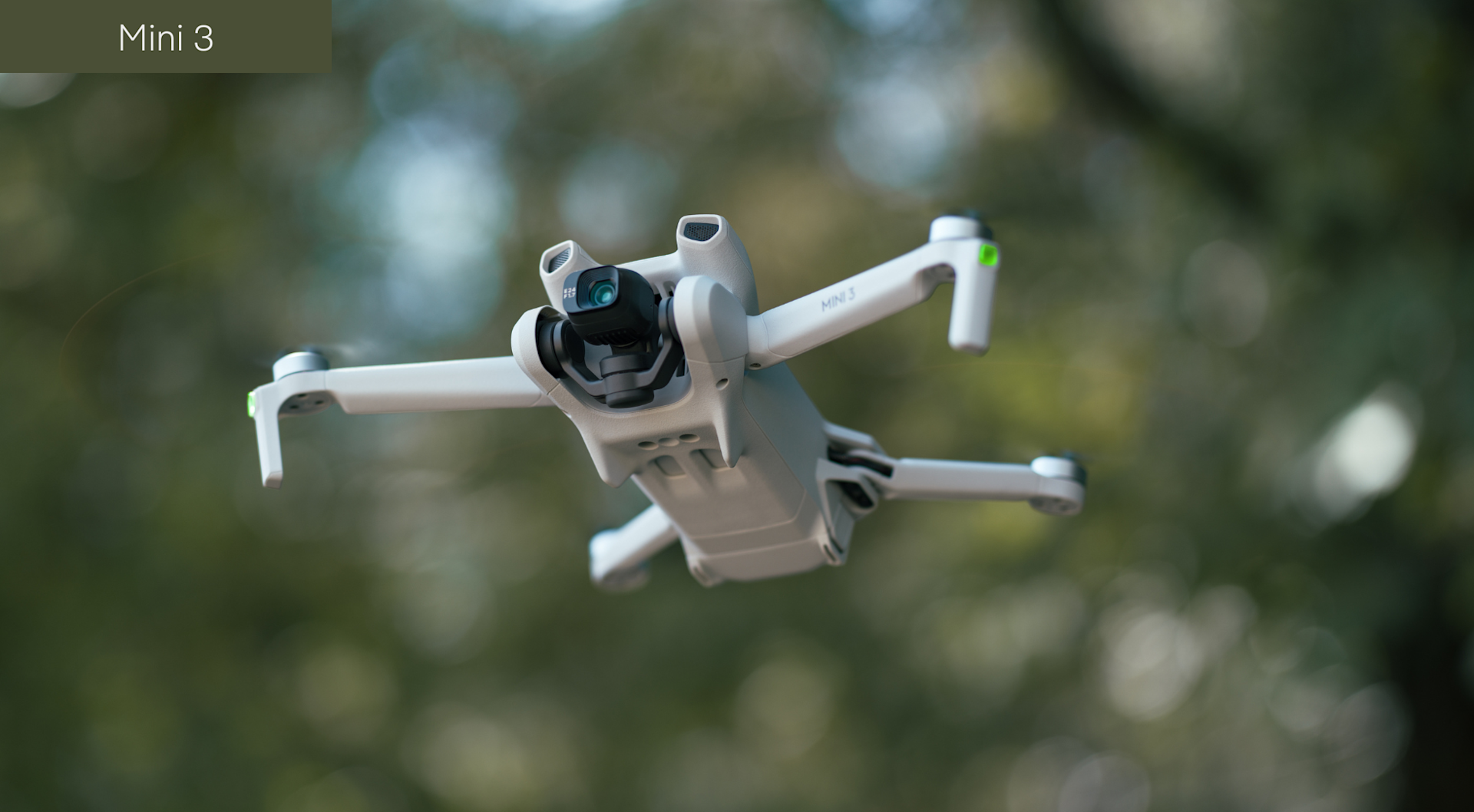
But whether any of this matters will depend on the requirements of each user.
After all, the new Mini 3 is still a hugely attractive proposition, especially for beginners or those wanting to save some cash.
However, for extra bit of investment, the Mini 3 Pro is a stellar choice and has raised the bar for what miniature drone are capable of.
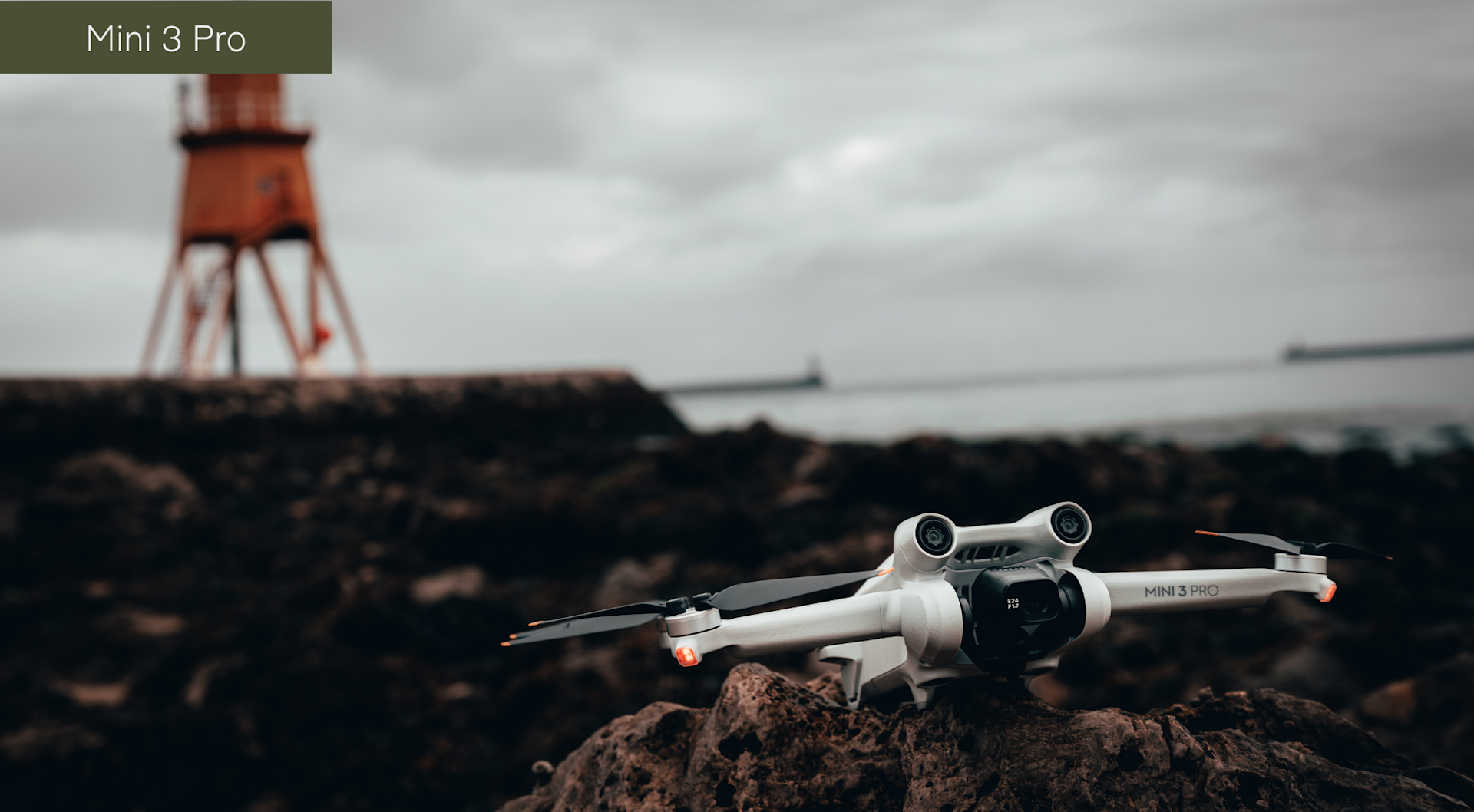
Either way, DJI has now provided its fanbase with two Mini 3s to choose from, giving more scope to pick the best option for your needs.
